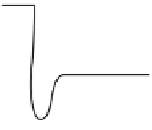Biomedical Engineering Reference
In-Depth Information
be used to document training impact. These measures might
include numbers of documents with defects, amount of
rework, and other business metrics.
The number of seats occupied in training sessions falls on
that continuum, somewhere between staffi ng levels and ROI,
nearer to the rudimentary endpoint of staffi ng levels.
26
Other
points on this continuum of the documentation of training
impact include training assessments such as knowledge
transfer assessments (KTAs) and skill demonstration
assessments (SDAs).
27
How can training documentation be used to test the
accuracy of theoretical statements about training? Consider
the following statements and accompanying graphic by
Harold Stolovitch: “Because training is costly and removes
workers from productive tasks, we expect signifi cantly
improved performance after training. Reality, however, is
usually very different, as illustrated by the post-training solid
line” (Figure 11.3).
28
These statements and the graphic are
quite intriguing to trainers.
Two methodological questions about Stolovitch's fi gure
arise: What kind of evidence would be required to determine
Figure 11.3
Post-training performance








































